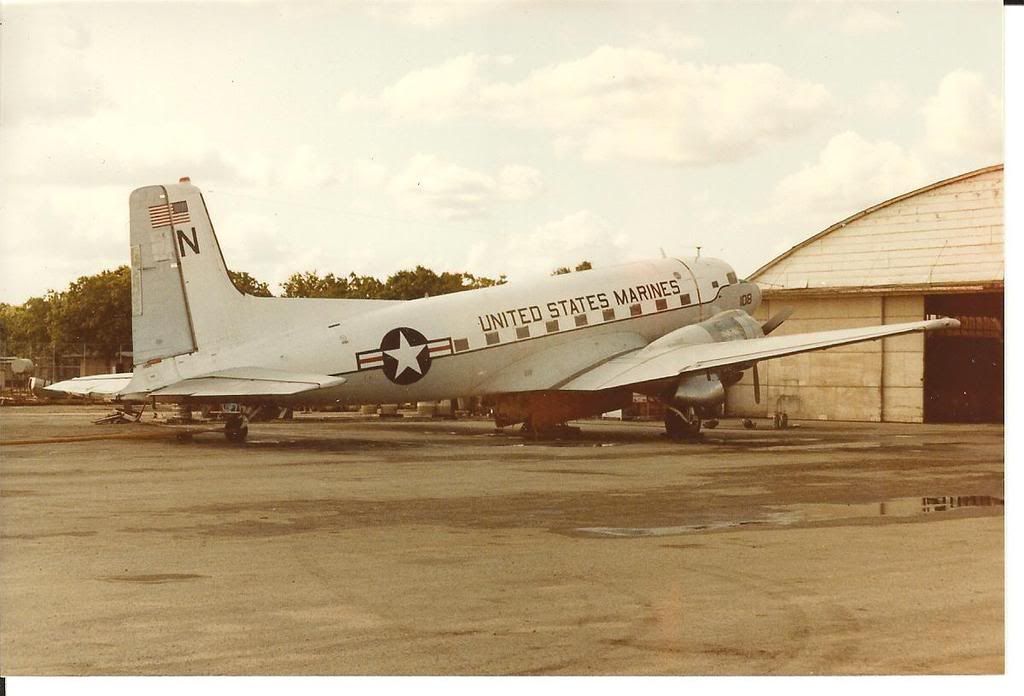For spookyboss and CAPFlyer,I believe that some experimentation was carried out with a DC-3 in the early days of the tanker business,but that was before I was involved.I'm almost sure that I've seen pictures of a tanked DC-3 dropping water or retardant somewhere.If I get a chance to talk to Milo Peltzer,the ultimate air tanker historian/photographer,I'll ask him about it.
Here's a picture of one of TBM's C-117D's in 1982 with a tank from an F7F on a dolly up against the belly for a test of the possibilty of tanking the airplane.In the end,it just wasn't considered to be economically sound.CAPFlyer has some valid points that were also brought up by TBM concerning the Super 3.Also,it would require 2 pilots for a 1000-1500 gl load.I think that about 1200 gl was the highest practical limit.As to single engine capability,that's a valid point.One advantage to a tanker,though is that you can go from max take-off weight to empty in about 2 seconds when you really need to.That isn't the answer to all engine out problems,but it helps.I have another photo of this lash-up taken from the front,but I can't seem to find it at the moment.TBM ended up tanking one of the three C-123's that they aquired instead.I have a number of C-123 pictures,mostly from when they arrived at Sequioa Field from the boneyard.I'll post those sometime.
All sorts of airplanes were experimented with in the early days (circa 1958-1961).These included operational N3N's and Stearmans,as well as a couple of Twin Beeches.I have a picture somewhere of a nose engine being added to a Beech (possible an AT-11) by Cal-Nat Airways at Grass Valley,California for use as a tanker.I don't think that it actually made it into use.I'm not sure what the nose engine was,other than it was a flat engine,possibly an O-470.I didn't actually see the airplane,but Buck Radcliffe,who used to fly for Cal-Nat gave me some pictures of it in the mid-60's.






